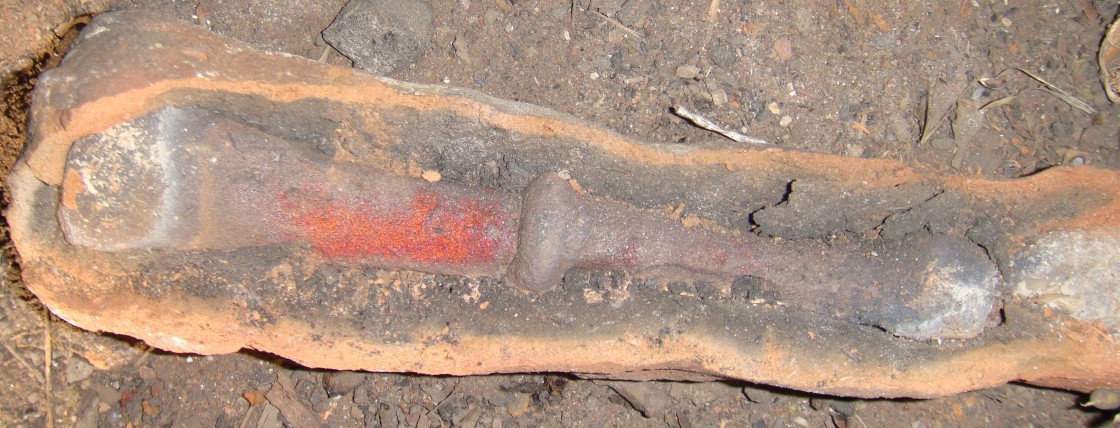Last year I tried to make havettes out of bronze, in a couple of hours one evening at Kentwell. You see, I started making the mould pre-pandemic, but didn’t manage to cast into it, not having enough time.
It is the mould and havette casting as discussed here in this post:
And here is the mould as I was working on it, with a pewter test piece beside it:

So last year I cast a few more pewter examples just in case I needed to do a sort of lost metal casting and in case the mould broke at least I would have a sort of record of what it was like. Then I added bronze to a crucible I had and put it into the furnace. It took a while to melt, because the furnace needs refurbished, but I was able to get it to the right stage of readiness and meanwhile I had heated the mould too. The casting did not succeed, as is usually the case, probably because the metal was not quite hot enough to flow well. Anyway, here it is:

However, as you can see the mould looks a bit odd. The stone was much more blue before I started, but now looks strange and the lead pins in the other side of it, there to hold it together, don’t fit quite right either. I assume this is because they were overheated when I warmed the mould and perhaps too the heat from 1100 C Bronze was a bit too high as well.
The bronze itself appears to have frozen in the mould, despite my pre-heating the mould almost hot enough to melt the lead. The bronze might not have been hot enough either, it was the first time I used the furnace for 2 years and I am out of practise.

Either way, what also happened was that a piece of the stone in the middle of it broke off because the bronze gripped it too tightly when it froze. This is annoying, but not entirely unexpected. The stone at least survived the molten bronze otherwise, as expected since soapstone has good thermal shock resistance, but the amount of heat that went into the stone, 1100 C down to 20C, was enormous and it might be worth using larger pieces in the future to better dissipate the energy. I also think that the type of soapstone will be important to how resilient it is when used for bronze casting. It may well be best for me to get hold of some other types of stone to try and cast bronze in, various sorts of mudstone seem to have been used in the past.
In the meantime I shall carry on trying to cast lost wax or use the fine powders that I have used. Getting hold of the right stone and preparing it will take some time, it is quite hard to get stone to a state with flat surfaces that can be carefully mated together. I should probably try approaching a stone mason or supplier of stone, but in modern times they are so specialised that it might not be a request that they can deal with.
